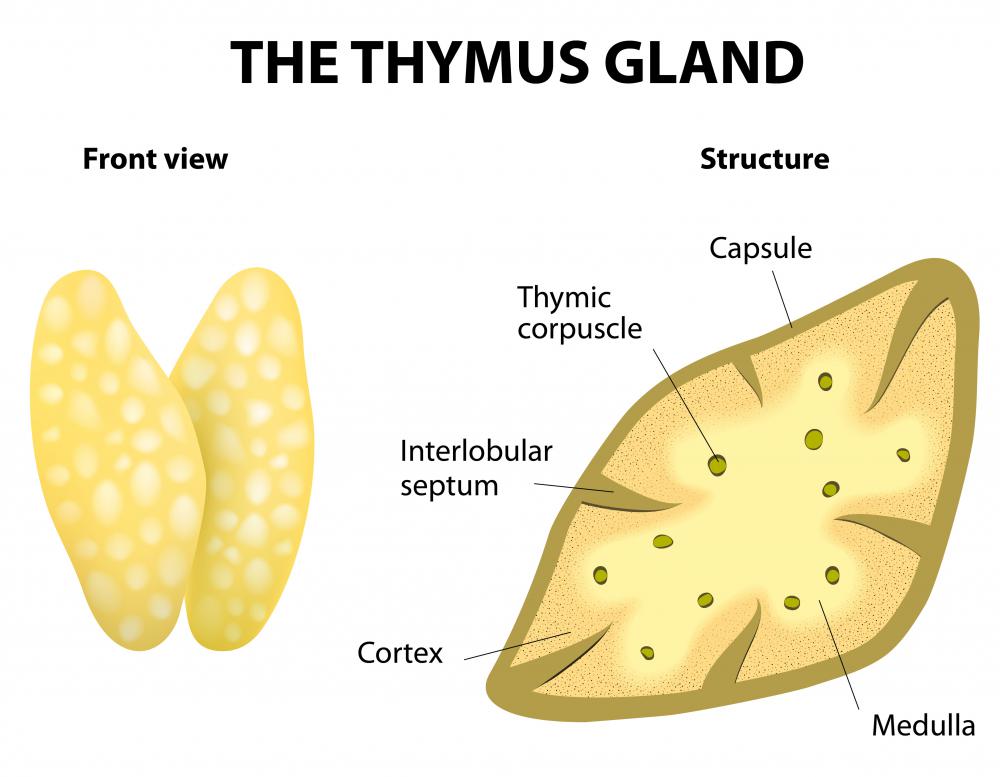At WiseGEEK, we're committed to delivering accurate, trustworthy information. Our expert-authored content is rigorously fact-checked and sourced from credible authorities. Discover how we uphold the highest standards in providing you with reliable knowledge.
What are the Different Myasthenia Gravis Symptoms?
Myasthenia gravis is a disease in which the immune system acts against the body, causing problems with muscle function. Muscle weakness occurs, and the eye muscles are usually affected first, leading to ptosis, or drooping eyelids, and double vision, or diplopia. Myasthenia gravis symptoms may spread to involve the muscles of the face, mouth and throat, causing difficulty speaking, or dysarthria, and difficulty swallowing, or dysphagia. Finally, the limb and chest muscles may be affected and, if the disease is severe, weakness of the respiratory muscles could hinder breathing. This is known as a myasthenic crisis, and artificial ventilation may be required.
Normally, the brain sends signals along nerves to make muscles contract. There is a small gap between the end of a nerve and the muscle it supplies, and a chemical known as acetyl choline travels across the gap and attaches to special receptors on the muscle, triggering contraction. When a person has myasthenia gravis, the body makes antibodies which damage or block the muscle receptors, preventing acetyl choline from attaching there. This makes it more difficult for the muscle to contract and, as a result, the person experiences myasthenia gravis symptoms resulting from muscle weakness.

Ocular myasthenia gravis symptoms, which involve weakness of the eye muscles, are experienced by around 90 percent of people with the disease. In a minority of cases, myasthenia signs and symptoms will only affect the eyes, causing drooping lids and double vision, but in most people the illness progresses within about three years and becomes generalized, with muscle weakness occurring throughout the body. Involvement of the face, mouth and throat may lead to loss of facial expression and can alter the voice, making it quieter or more nasal.

Difficulties with chewing and swallowing might cause choking or regurgitation of food, and neck weakness may cause the head to loll. Weak leg muscles can affect walking, resulting in a waddling gait, and it may be difficult to use the arms. When myasthenia gravis affects the respiratory muscles, coughing and chest infections can occur.
Myasthenia gravis symptoms tend to increase with activity, when the muscles are used repeatedly. Typically, this means that muscle weakness is greater at the end of a day or immediately following exercise. Rest leads to improvement of myasthenia gravis symptoms. The severity of symptoms varies widely among individuals, but the disease tends to progress in the first few years.

In order to treat the illness, drugs may be used to increase the amount of acetyl choline or suppress the immune system. Sometimes the thymus, a gland which produces the antibodies that cause the disease, is removed surgically. Treatment of myasthenia gravis is usually successful and people generally go on to lead normal lives.
AS FEATURED ON:
AS FEATURED ON:

















Discuss this Article
Post your comments